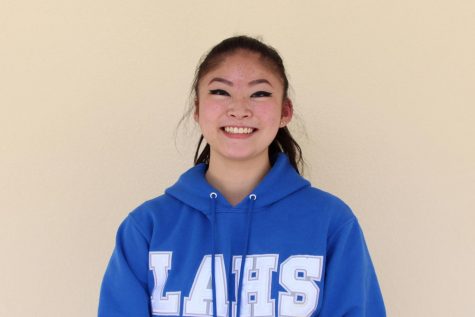City Holds Downtown Visioning Workshop
Residents provided feedback to help shape downtown’s future, while the city still seeks teen voices.
The city added affordable housing to Scenarios 2, 3 and 4 based on community and City Council members’ feedback to alleviate the effects of California’s housing crisis. The city unveiled the first version of the scenarios in August, then significantly revised them after 25 meetings and pop-up workshops. Anne Schill.
December 13, 2017
The City of Los Altos presented revised drafts of proposed downtown visioning scenarios at a community workshop on November 29, 2017 including a new scenario, affordable housing and pedestrian plazas. Through the visioning process, the city aims to make a broad document that creates a long-term plan to increase Los Altos’ vitality to revive retail sales and create more community spaces.
The scenarios detail different levels of vitality Los Altos could have in the next 10 to 20 years and how elements of the city affect these levels. To create a plan that all citizens want for the future, the city and consultants from architectural firm RRM Design gathered community feedback through 25 meetings and pop-up workshops.
They revised more than half the elements of the original scenarios based on community feedback, but they are still missing feedback from a large but important portion of the demographic: teens.
“In a project like this, where it’s a city project and the city council is interested in what the community as a whole really wants, [feedback from the teen demographic] really steers the direction on where the [scenarios] go,” RRM Design Principal Debbie Rudd said. “We did not hear from very many students in the community, so we’re really interested to see what students would like to see in their downtown.”
“[Teens] are the ones, or at least represent those, that will avail themselves and use the downtown in the future,” Community Development Director Jon Biggs said. “Downtowns thrive when they include the amenities, activities and commercial services that people of a community need and want.”
The workshop aimed to develop and shape a single scenario that achieves the level of vitality and includes the elements that most citizens want. At the workshop, around 100 community members listened to a presentation by consulting firm RRM Design and economic analyst senior partner at Land Economic Group Bill Lee. They then picked their favorite elements from each scenario and proposed alterations and new suggestions.
The scenarios presented at the recent workshop showed significant revisions from when they were first unveiled in August based on community feedback through 25 meetings and pop-up workshops. More than half of the elements in the scenarios are modified or new, generated from public feedback from the events.
In pop-up workshops, the city goes to events like Junior Olympics, the Farmer’s Market and Grant Park with a small tent where citizens can give their input on the scenarios. Meetings take place in more formal settings, focusing on gathering feedback from specific demographics at a time such as the Los Altos Chamber of Commerce and City Council.
Alterations to the initial scenarios include changing locations of certain elements, like the plazas in which people can congregate, and adding new elements, like affordable workforce housing. The plazas in particular now spread across more of Los Altos in certain scenarios and they include so-called “activity nodes,” like fire pits with seating around them and ping pong tables.
The activity nodes can be tailored to specific age groups, Rudd said, and many community members called for one of the activity nodes to be for teens specifically. But Rudd said the city currently lacks teen feedback and teen voices would be beneficial.
Based off of community and City Council feedback, the city also added affordable housing in Scenarios 2, 3 and 4. This housing would have price limits and would give people a cheaper option to live than the high-priced land in and around Los Altos. The city opted to include housing in visioning over keeping it a separate project elsewhere in Los Altos to incentivize developers to build on set-aside parcels of land rather than wait for new ones to become available.
RRM Design also presented a new, “out of the box” fourth alternative with the highest estimated level of vitality based on feedback from City Council. City Council wished to see a larger range from the level of vitality of Scenario 1 (a 9.5 percent increase in vitality) than Scenario 3 (a 17.1 percent increase in vitality) proposed. Scenario 4 (a 19.8 percent increase in vitality) also gives new ways, like a boutique hotel, to utilize land that do not appear in the previous scenarios, and Biggs hopes the fourth scenario will act as an “inspiration document” for citizens to also think outside of the box.
If citizens missed the workshop or if they would like to give additional feedback, they can fill out an online survey that mimics the feedback process at the workshop and will stay open until Sunday, December 17, 2017. More pop up workshops and meetings will also take place, and there will be a third community workshop in March, with the city planning to have a final visioning plan in July.
“It’s going to be important for the community to participate,” Biggs said. “I want to emphasize that these scenarios are a tool that will help us get closer to the actual vision document that will be what the city council needs to consider and adopt to help guide the downtown off into the future.”




